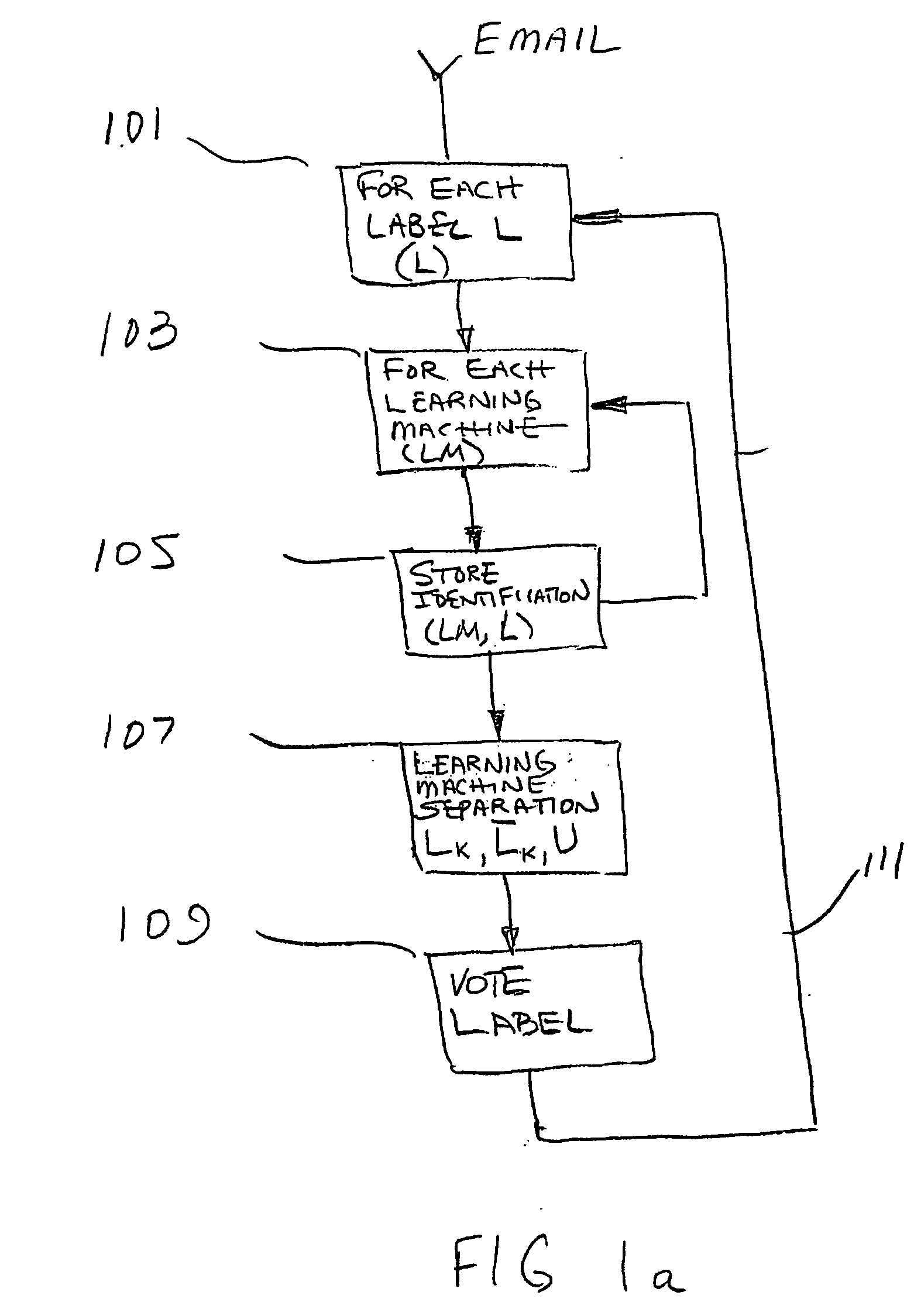Method, apparatus, and system for clustering and classification
a clustering and classification technology, applied in the field of coded data generation or conversion, can solve the problems of reducing worker productivity, slowing down important network applications, and today's digital economy
- Summary
- Abstract
- Description
- Claims
- Application Information
AI Technical Summary
Benefits of technology
Problems solved by technology
Method used
Image
Examples
Embodiment Construction
[0046] In the figures to be discussed, the circuits and associated blocks and arrows represent functions of the process according to the present invention, which may be implemented as electrical circuits and associated wires or data busses, which transport electrical signals. Alternatively, one or more associated arrows may represent communication (e.g., data flow) between software routines, particularly when the present method or apparatus of the present invention is a digital process.
[0047]FIG. 1a provides an overview of the inventive method for classifying, separating and storing emails based upon one or more novel document classification schemes. Email is received 101 for purposes of applying an identifying label, such as whether an email pertains to finances, law and taxes or any subject for which emails might be sent over the World Wide Web. The email is subjected to a process for identification 103 as provided by one or more learning machines. An identification or label is p...
PUM
 Login to View More
Login to View More Abstract
Description
Claims
Application Information
 Login to View More
Login to View More - R&D
- Intellectual Property
- Life Sciences
- Materials
- Tech Scout
- Unparalleled Data Quality
- Higher Quality Content
- 60% Fewer Hallucinations
Browse by: Latest US Patents, China's latest patents, Technical Efficacy Thesaurus, Application Domain, Technology Topic, Popular Technical Reports.
© 2025 PatSnap. All rights reserved.Legal|Privacy policy|Modern Slavery Act Transparency Statement|Sitemap|About US| Contact US: help@patsnap.com



